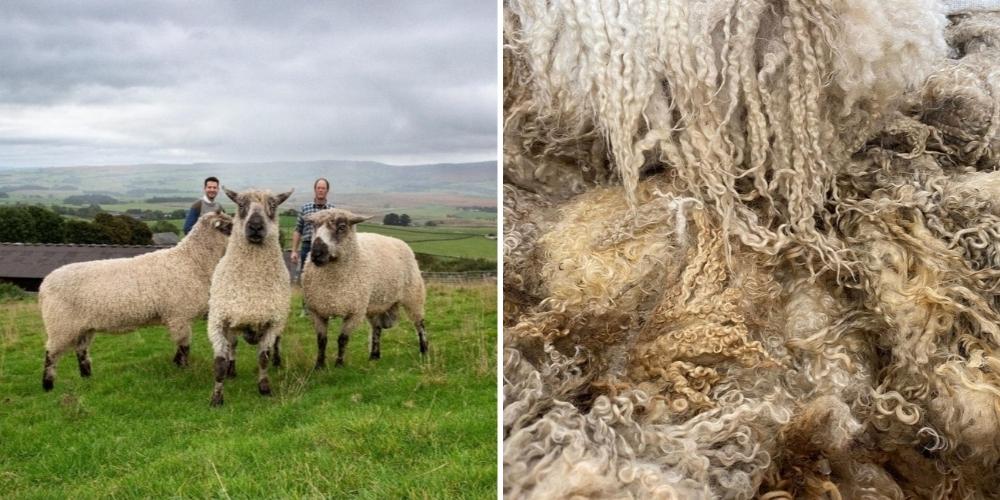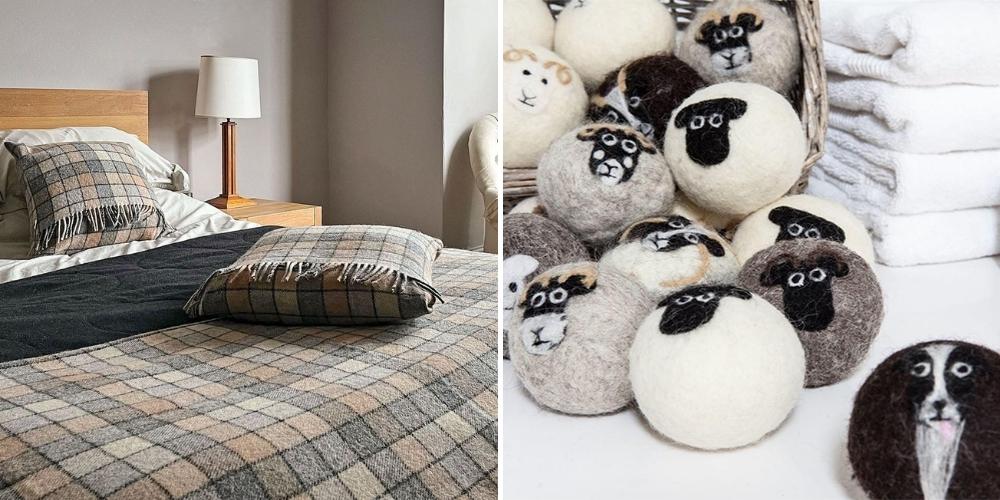How much do you know about the wool industry and British wool? We bring you 10 amazing facts so you can find out more about this unique fibre.
This week sees the official start of Wool Month (3rd-30th October), a campaign by British Wool to amplify the wool message to consumers and help drive new demand for wool from British sheep. Previously known as Wool Week, the event has gained such acclaim from businesses and consumers alike that it now runs for the whole month of October.
[Updated 2022]

Dispelling the Myth That British Wool is Only Suitable for Carpets
Bridgette Kelly from British Wool is keen to dispel the myth that the fleece from our homegrown sheep breeds is unsuitable for anything other than carpets. In fact, it’s all a bit more complicated than that, as she explains…
“British wool is usually what we call ‘strong’ as it has quite a high micron. The best use of it is often for interior textiles, such as carpets, rugs and upholstery fabrics, but it’s also well-known for being used in tweed.
It depends on which breed the wool comes from and where that breed is located. The Northern and Scottish breeds, which produce the coarser yarn, are used for tweed and interior textiles, whereas the lowland breeds in Devon and Dorset produce a much softer wool and this is often used by hand spinners to produce yarn for clothing.
The finest wool produced in the UK is from Blue Faced Leicester.
Weather and the geographical location of the flock also influence the quality of the wool in terms of its micron. For instance, if you are a Welsh mountain sheep, your fleece is going to be strong and robust as it has responded to the harsh weather, whereas sheep in the lowlands don’t need quite such strong fleece, so it is softer and finer and used for blankets and fabrics. “

10 Facts About British Wool
- Britain is one of the largest wool producers in the world, yielding nearly 70,000 tonnes per year.
- Payments to farmers have jumped to an overall average of 36.4p per kilo for their wool. That’s a 135% increase on 2020 prices, with a further price improvement to come in 2022.
- There is only one farmer in the UK (Lesley Prior) that produces Merino wool (a type of very fine fibre used for clothing).
- There are 45,000 sheep farmers in the UK. Employment in the sheep industry is worth approximately £290 million to the economy.
- 34 million sheep reside in the British Isles.
- Britain has more than 60 different breeds of sheep, 25 of which are rare breeds. That’s more than any other country in the world.
- There are only two wool scourers left in the UK.
- There are many shows that celebrate wool including Yorkshire Yarn Fest in York, Woolfest in Cumbria and West Wales Wool Show just to name a few.
- It takes at least ten processes to get wool from sheep to cloth. They are shearing, grading, auction, scouring, carding, combing, spinning, weaving, dyeing and finishing.
- Companies such as Romney Marsh Wool and Izzy Lane commit to using British wool from flock to finished product ensuring a truly 100% British product.
Who Buys British Wool?
So, how much British wool stays in the UK, and what percentage is exported? It appears that this is not an easy formula to calculate, as Bridgette explains:
“There is not a simple answer to this question because of how wool is sold in the UK.
The wools from a region will be collected from farmers and will go for grading. It is graded first by hand and eye and then put into a ‘type’. It is the types that are sold at auction – there are about 130 types of wool. The merchants that buy the wool fortnightly at auctions in Bradford will buy a ‘type’. Although the bidding is now done by a computerised system, they still have to physically go to the auction and bid.
The merchants trade the wool all over the world. Between fifty and sixty percent goes to China, a market that has grown considerably over the last four or five years. The rest is bought by other countries, including the UK.
Because of many processes involved in getting wool from fleece to finished product, such as scouring (cleaning), spinning and weaving, very little British wool stays in the UK for the entire supply chain. It may be scoured and spun in China but then return back to the UK for weaving. At that point it is difficult to know what percentage of the wool included within the product has come from a British flock.
British wool is not a fast fibre, it is a slow production”
